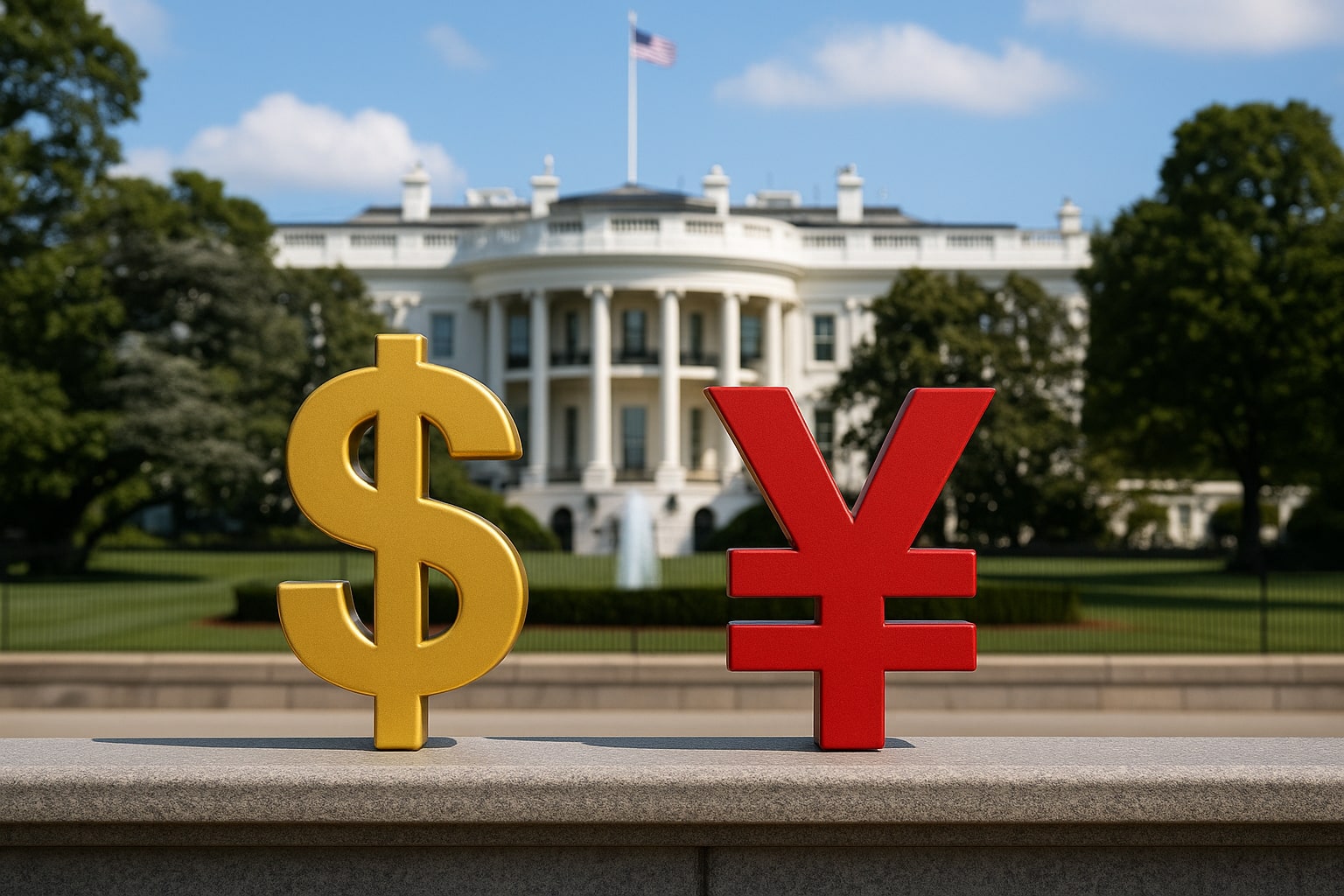USD/JPY Price Analysis: Bearish Momentum Builds Amid Fed Expectations and Geopolitical Pressures
The USD/JPY pair is showing increasing bearish momentum as it trades lower near the 144.80 level during the Asian session on Monday. This marks a significant shift in price action, primarily driven by a mixture of factors, including expectations for future Federal Reserve (Fed) rate cuts and geopolitical tensions. The pair has slipped from recent highs, struggling to maintain bullish momentum in the face of a strengthening Japanese yen (JPY) and a series of negative economic signals for the US dollar (USD).
USD/JPY Faces Strong Bearish Pressure from US Dollar Weakness and BoJ Rate Expectations
A major catalyst for the recent decline in the USD/JPY pair has been the growing conviction among traders that the Bank of Japan (BoJ) will implement further rate hikes in 2025. This outlook has bolstered the Japanese yen, making it more appealing in comparison to the US dollar, especially as the yen benefits from its safe-haven status amid global risk aversion. On the flip side, the US dollar has faced significant challenges due to a string of disappointing economic data and concerns about the country's fiscal situation. The downgrade of the US sovereign credit rating by Moody’s has further soured sentiment towards the USD, which has weighed heavily on the USD/JPY price action. The downgrade, along with concerns about rising US debt, led to a fall in the USD index (DXY), which pushed USD/JPY toward the 144.80 region.
US Data Disappointments and Dovish Fed Expectations Weigh on USD/JPY
Economic data from the US has been underwhelming recently, particularly with weaker-than-expected inflation figures and a slowdown in consumer sentiment. These developments have fueled speculation that the Federal Reserve will pursue a more dovish policy stance moving forward, potentially cutting rates in the latter half of 2025. The combination of a softening US economy and diminishing expectations of aggressive Fed tightening is putting pressure on the USD. Analysts are now anticipating a continuation of the USD/JPY downtrend, with key levels to watch at 144.50 and 144.00 for potential support zones. A clear break below these levels could open the door for further declines toward 142.50.
Japanese Yen's Strength Reflects Diverging BoJ and Fed Policies
The Japanese yen's resilience is largely due to the contrasting policy expectations between the BoJ and the Fed. As the BoJ signals that it may continue to tighten its policy to combat rising inflation, the yen has benefitted from the relative yield advantage it offers over the US dollar. On the other hand, expectations of rate cuts by the Fed, along with the broader risk-off sentiment, have been detrimental to the USD, leading to further weakness in USD/JPY.
As of the latest data, USD/JPY has been trading near 144.80, a critical level that will determine whether the pair can maintain a bearish trajectory or if a potential rebound could occur. The 144.50 level remains a strong support zone, and should USD/JPY breach it, the pair could experience deeper losses, possibly testing the 142.50 region in the coming weeks. Conversely, resistance remains at the 146.00 level, followed by 147.30, with any recovery being capped by these levels unless significant catalysts emerge to shift market sentiment.
Fed Officials' Speeches and Market Sentiment to Drive USD/JPY in the Short Term
In the short term, the outlook for USD/JPY will be influenced by speeches from key Federal Reserve officials, including President John Williams and Vice Chair Lael Brainard. Traders will be keenly focused on their comments regarding the US economy, inflation expectations, and the outlook for future monetary policy. Should these speeches further confirm expectations of a dovish Fed, the pressure on the USD could intensify, leading to a possible extension of the bearish trend in USD/JPY. However, any hawkish comments or signs of resilience in the US economy could provide temporary relief for the USD, potentially lifting USD/JPY toward the 146.30 resistance level.
USD/JPY Technical Outlook: A Range-Bound Market with Bearish Bias
From a technical perspective, USD/JPY has been consolidating in a tight range between 144.50 and 147.30, with the recent downward momentum suggesting a bearish bias. The pair has failed to sustain gains above the 145.80 resistance, signaling that selling pressure is building. A break below the 144.50 support could trigger further declines, with the next support zones at 144.00 and 142.50. However, should the USD regain strength, a push above 146.00 could signal a reversal in sentiment, allowing for a potential rally toward the 147.30 level.
Geopolitical Tensions and USD/JPY: Will Trade Negotiations Play a Role?
Geopolitical tensions also remain a key factor in driving USD/JPY price action. Ongoing trade talks, especially between the US and China, have influenced market sentiment, and any escalation in trade tensions could lead to a further strengthening of the Japanese yen. On the other hand, progress in trade deals could lead to a rebound in risk sentiment, potentially lifting the US dollar and putting upward pressure on USD/JPY. The geopolitical landscape remains fluid, and traders will need to remain vigilant to any new developments that could impact market sentiment.
USD/JPY Price Forecast: Bearish Momentum Persists Amid Fed and BoJ Divergence
The outlook for USD/JPY remains largely bearish, driven by the contrasting monetary policy paths of the Federal Reserve and the Bank of Japan. As the Fed is expected to pursue rate cuts, the USD continues to struggle, while the BoJ’s hawkish stance supports the yen. The surprise downgrade of the US credit rating and ongoing geopolitical risks further weigh on the USD, maintaining the downward pressure on USD/JPY. With the pair currently trading around 144.80, the next few sessions will be crucial in determining whether USD/JPY can hold above key support levels or if further downside will materialize.
The path ahead for USD/JPY will depend heavily on the economic data and policy signals from both the US and Japan. Investors should keep an eye on developments surrounding the Federal Reserve’s stance on interest rates, as well as any geopolitical escalations that could affect market sentiment. With the current trend pointing toward further downside, USD/JPY is likely to continue its struggle unless a strong reversal catalyst emerges from the Fed or external geopolitical factors.




















